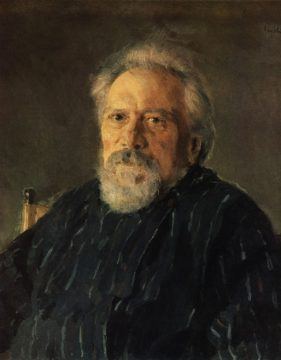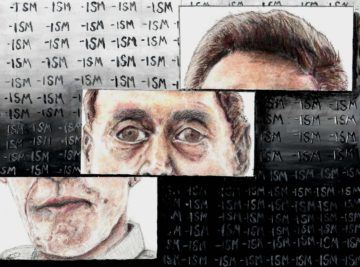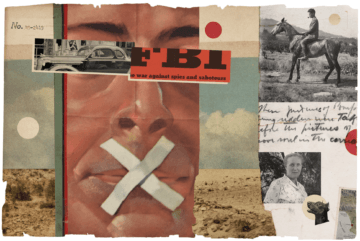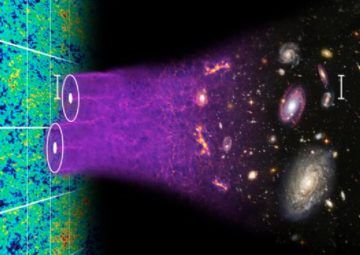Rahila Gupta in New Humanist:
 On World Hijab Day, 1 February, the Council of Ex-Muslims of Britain (CEMB) will premiere Women Leaving Islam online, a documentary which explores the violence and repression that Islam’s modesty culture visits upon its women. Six women from the most diverse backgrounds, from different countries in the world and different wings of Islam but now settled in Europe and Australia, talk movingly of their journey from the hijab to freedom. I defy you not to cry along with them. None of them could have openly come out as atheists in their countries of origin without being declared an apostate or blasphemer either by the state or the wider community.
On World Hijab Day, 1 February, the Council of Ex-Muslims of Britain (CEMB) will premiere Women Leaving Islam online, a documentary which explores the violence and repression that Islam’s modesty culture visits upon its women. Six women from the most diverse backgrounds, from different countries in the world and different wings of Islam but now settled in Europe and Australia, talk movingly of their journey from the hijab to freedom. I defy you not to cry along with them. None of them could have openly come out as atheists in their countries of origin without being declared an apostate or blasphemer either by the state or the wider community.
Apostasy and blasphemy are criminal offences punishable by death in 13 Muslim-majority countries. Pakistan and Saudi Arabia are on that list and the home countries of two of the women: Fauzia Ilyas and Rana Ahmad. When Fauzia wanted to divorce her excessively religious and controlling husband, the court granted a divorce but gave the custody of her little daughter to her husband because he told the courts that she had renounced Islam and was a blasphemer. When her home was attacked by a mob, she fled and sought refuge in the Netherlands. Being a woman and an ex-Muslim in Pakistan is “a dangerous combination” she says. Ironically, as an asylum seeker in Amsterdam, she found that the centres were full of religious Muslims who were not welcoming of her.
Rana Ahmad was forced into going to Mecca by her mother who suspected that her religious faith was a bit shaky. Her act of rebellion, of coming out loud and proud while remaining safe, was to find a camera in a quiet part of the Kaaba, writing the words “Atheist Republic” on a piece of paper and flashing it in front of the CCTV. Eventually she fled Saudi Arabia and later described the experience: “At the moment when I was in the middle of the sea between Turkey and Greece, I get the feeling that if I die at this moment, I am happy because I tried to be free… But I ask why it has to be so expensive. It’s broken me from inside.”
More here.

 A
A  In the essay, Didion describes a particular “shimmer” that would form around images in her mind, creating a frame of sorts that pulled her in, impelled her to set down words as a means of telling the scene into being. She compares this shimmer to the way a schizophrenic or someone under the influence of psychedelic drugs is purported to perceive his surroundings — ”molecular structure breaking down,” foreground and background “interacting, exchanging ions.”
In the essay, Didion describes a particular “shimmer” that would form around images in her mind, creating a frame of sorts that pulled her in, impelled her to set down words as a means of telling the scene into being. She compares this shimmer to the way a schizophrenic or someone under the influence of psychedelic drugs is purported to perceive his surroundings — ”molecular structure breaking down,” foreground and background “interacting, exchanging ions.” AS A PROFESSOR OF MINE
AS A PROFESSOR OF MINE It’s tempting to presume a clear line between intention and accomplishment, but Janice P. Nimura, in her enthralling new book, “The Doctors Blackwell,” tells the story of two sisters who became feminist figures almost in spite of themselves. Elizabeth Blackwell was the first woman to receive a medical degree in the United States, in 1849, and she later enlisted her younger sister Emily to join her. Together they ran the New York Infirmary for Indigent Women and Children and founded a women’s medical college — even though, as Nimura puts it, opening a separate school for women was just about the last thing they had planned to do.
It’s tempting to presume a clear line between intention and accomplishment, but Janice P. Nimura, in her enthralling new book, “The Doctors Blackwell,” tells the story of two sisters who became feminist figures almost in spite of themselves. Elizabeth Blackwell was the first woman to receive a medical degree in the United States, in 1849, and she later enlisted her younger sister Emily to join her. Together they ran the New York Infirmary for Indigent Women and Children and founded a women’s medical college — even though, as Nimura puts it, opening a separate school for women was just about the last thing they had planned to do. I want to write about a certain kind of prose. It is the kind of prose that gets lost in itself. The kind of writing that tumbles head over heels and threatens to drown in its own wake. But not quite. The kind of prose that drowns completely is not so interesting. And the prose that never gets lost is not so interesting either. In my opinion. You’ve got to teeter around and stumble just at the edge there. In my opinion.
I want to write about a certain kind of prose. It is the kind of prose that gets lost in itself. The kind of writing that tumbles head over heels and threatens to drown in its own wake. But not quite. The kind of prose that drowns completely is not so interesting. And the prose that never gets lost is not so interesting either. In my opinion. You’ve got to teeter around and stumble just at the edge there. In my opinion. Imagine spilling a plate of food into your lap in front of a crowd. Afterwards, you might fix your gaze on your cell phone to avoid acknowledging the bumble to onlookers. Similarly, after disappointing your family or colleagues, it can be hard to look them in the eye. Why do people avoid acknowledging faux pas or transgressions that they know an audience already knows about?
Imagine spilling a plate of food into your lap in front of a crowd. Afterwards, you might fix your gaze on your cell phone to avoid acknowledging the bumble to onlookers. Similarly, after disappointing your family or colleagues, it can be hard to look them in the eye. Why do people avoid acknowledging faux pas or transgressions that they know an audience already knows about? It was February 20, 1939, two days before George Washington’s birthday. Fritz Kuhn, leader of the prominent pro-Nazi German American Bund, took the stage at Madison Square Garden. Behind him stood a towering 30-foot portrait of the first US president between giant swastikas, and around him twenty thousand rally-goers. Posters at this infamous Pro-America Rally promised a “mass-demonstration for true Americanism,” bringing National Socialist ideals to the American people. Participants waved American flags, marched to loud drum rolls, and heard pro-fascist speeches. Speakers urged the audience to embrace National Socialism, not merely to show support for Germany, but above all because it was fundamentally American.
It was February 20, 1939, two days before George Washington’s birthday. Fritz Kuhn, leader of the prominent pro-Nazi German American Bund, took the stage at Madison Square Garden. Behind him stood a towering 30-foot portrait of the first US president between giant swastikas, and around him twenty thousand rally-goers. Posters at this infamous Pro-America Rally promised a “mass-demonstration for true Americanism,” bringing National Socialist ideals to the American people. Participants waved American flags, marched to loud drum rolls, and heard pro-fascist speeches. Speakers urged the audience to embrace National Socialism, not merely to show support for Germany, but above all because it was fundamentally American. The United States of America was founded on a conspiracy theory. In the lead-up to the War of Independence, revolutionaries argued that a tax on tea or stamps is not just a tax, but the opening gambit in a sinister plot of oppression. The signers of the Declaration of Independence were convinced — based on “a long train of abuses and usurpations” — that the king of Great Britain was conspiring to establish “an absolute Tyranny” over the colonies.
The United States of America was founded on a conspiracy theory. In the lead-up to the War of Independence, revolutionaries argued that a tax on tea or stamps is not just a tax, but the opening gambit in a sinister plot of oppression. The signers of the Declaration of Independence were convinced — based on “a long train of abuses and usurpations” — that the king of Great Britain was conspiring to establish “an absolute Tyranny” over the colonies. My daughter, a Pakistani American mother of two young children, married to an African American man of Jamaican parentage, is understandably excited about our new Veep-to-be, Kamala Harris. She keeps sending me articles by “desi” women like herself in relationships with Black men, who are excited about this new chapter dawning in American history.
My daughter, a Pakistani American mother of two young children, married to an African American man of Jamaican parentage, is understandably excited about our new Veep-to-be, Kamala Harris. She keeps sending me articles by “desi” women like herself in relationships with Black men, who are excited about this new chapter dawning in American history. During the mad rush of leaving, they had to find homes for 60 animals, a menagerie of horses, snakes, turtles, and various other creatures. Only two made the cut to tag along with them: their blue budgie parakeet, Bird, who went eerily still as they crossed the Sonoran Desert, and their Doberman, Kinch, who panted in the scorching heat.
During the mad rush of leaving, they had to find homes for 60 animals, a menagerie of horses, snakes, turtles, and various other creatures. Only two made the cut to tag along with them: their blue budgie parakeet, Bird, who went eerily still as they crossed the Sonoran Desert, and their Doberman, Kinch, who panted in the scorching heat. No matter how much we might try and hide it, there’s an enormous problem staring us all in the face when it comes to the Universe. If we understood just three things:
No matter how much we might try and hide it, there’s an enormous problem staring us all in the face when it comes to the Universe. If we understood just three things: A record-breaking 4,000 Americans are now dying each day from Covid-19, while the federal government fumbles vaccine production and distribution, testing and tracing. In the midst of the worst pandemic in 100 years, more than 90 million Americans are uninsured or underinsured and can’t afford to go to a doctor when they get sick. The isolation and anxiety caused by the pandemic has resulted in a huge increase in mental illness.
A record-breaking 4,000 Americans are now dying each day from Covid-19, while the federal government fumbles vaccine production and distribution, testing and tracing. In the midst of the worst pandemic in 100 years, more than 90 million Americans are uninsured or underinsured and can’t afford to go to a doctor when they get sick. The isolation and anxiety caused by the pandemic has resulted in a huge increase in mental illness.